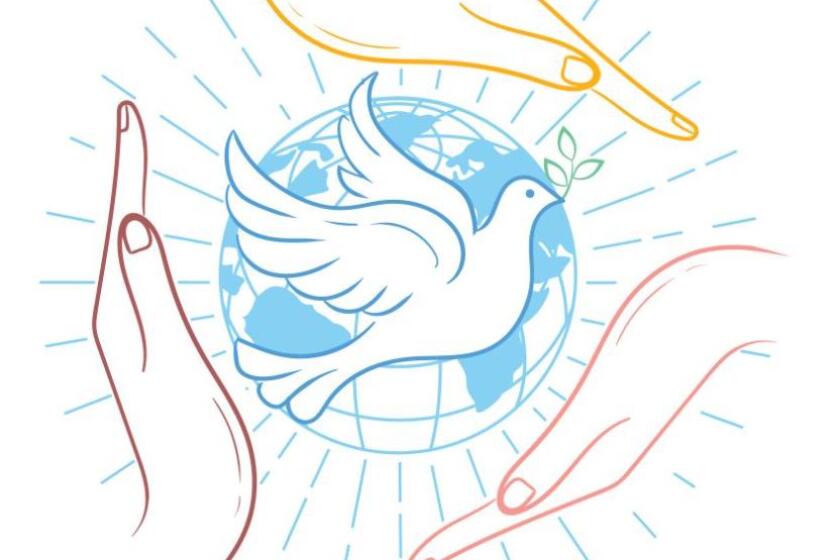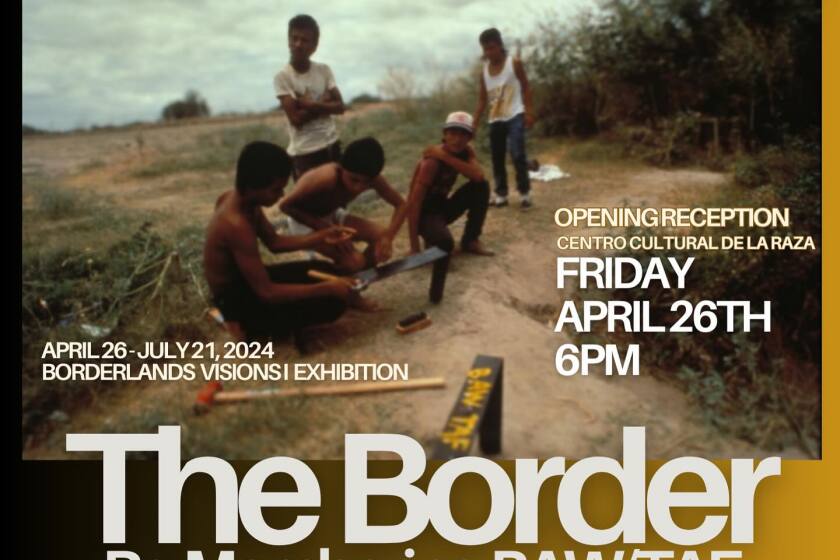Opinion: I grew up in segregated San Diego before going to work with Mother Teresa

I grew up in a time period that wasn’t very welcoming to Latinos like myself.
Sister Castro is a nun at St. Rita’s Catholic Church and a member of Sisters for Christian Community. She lives in Southeast San Diego.
When I was first asked to contribute to the San Diego Latino Legacy project, I thought I didn’t think I had much to offer. And that’s what I told the Latino Legacy Foundation.
Then, after I began reflecting on my life, I realized that I grew up in a time period that wasn’t very welcoming to Latinos like myself.
I’m proud to share with you these stories of what life was like for me back in the 1940s and 1950s.
When I was a little girl, our neighbors in Old Town were Mexican Americans, Chinese Americans and African Americans, and it seemed like everybody got along. My parents, James and Lydia Anna Castro, had bought our small home in the 1930s.
It was only when we were older that my brother Richard and I learned from my father that we lived in a segregated neighborhood.
Segregation was always part of our lives. For example, our father loved to take us to the annual rodeo in Lakeside, but we were only allowed to sit in a certain, separate area.
When I was about 10, I asked my dad, “How come we always have to sit in this area where the hot sun is always in our eyes?”
He told me to be quiet and “Don’t say anything.”
Later he told me it was “because the White people sit on that side and we sit on the other side.”
In 1951, I was bused from Old Town to Dana Junior High in Point Loma, along with 40 of my schoolmates who were Mexican Americans, Chinese Americans and African Americans.
When we first arrived, the police escorted us inside the school as White students and their parents chanted, “Go home.”
We were taken into a special classroom where we stayed all day long with one teacher, while the other children changed classes. And one day day I asked my teacher, “What are we doing in a class where we don’t do anything?”
She told me that was just the way it was. After a few weeks went by, we were moved into regular classrooms. But I never forgot how we were treated there.
I also remember that my parents did our food shopping at a Big Bear market in Southeast San Diego. There was a grocery store in Old Town, but it was much more expensive, so we took the bus once a week to Southeast San Diego. My parents told me that the reason the meat was cheaper at Big Bear was that the store accepted packages of unsold, older meat from other stores around the city. As a result, that’s where all the poor people went for groceries.
I set out on my own path at 17, serving as a nun with Mother Teresa for more than 15 years in India, helping the very poor.
As you might imagine, Mother Teresa was a very strong-minded person. She’d walk into any government building in Calcutta and tell them, “The people need this,” and they’d say at first, “Oh, no, Mother.”
Then she’d reply: “It’s for the people. We have to have it.”
She had a way of getting people to do things that improved the lives of poor people. Being around her as much as I was, I learned that you had to be persistent to get powerful people to care about the poor.
In the early 1960s, I decided it was time to come back to San Diego, so I got a job at Neighborhood House in San Diego, and I began fighting for poor people’s rights in a different way.
That’s when things were beginning to happen in this country regarding civil rights for African Americans, led by Martin Luther King Jr.
I remember helping an African American man who had come back from Vietnam, and was living in a tiny apartment. He had cancer in his spine, and was in a lot of pain. He was told he couldn’t get help at the veterans hospital in La Jolla, and asked me if I could help.
The next day, I drove him to the veterans hospital and demanded that its staff take care of him. Because I made such a fuss, they finally did admit him. Later, we got somebody to come to his house, to care for him and for a time, he got better.
I used the techniques that Mother Teresa had taught me, saying, “You’re going to do it,” and they did it. I learned a lot of things from her — not just prayer, but the power of prayer and action, as she used to say. She taught me resilience and compassion to better serve others less fortunate than myself. That was her greatest gift to me.
And telling my story for the San Diego Latino Legacy was one of the most fulfilling things I have done in a long time besides being a good nun.
Get Weekend Opinion on Sundays and Reader Opinion on Mondays
Editorials, commentary and more delivered Sunday morning, and Reader Reaction on Mondays.
You may occasionally receive promotional content from the San Diego Union-Tribune.




